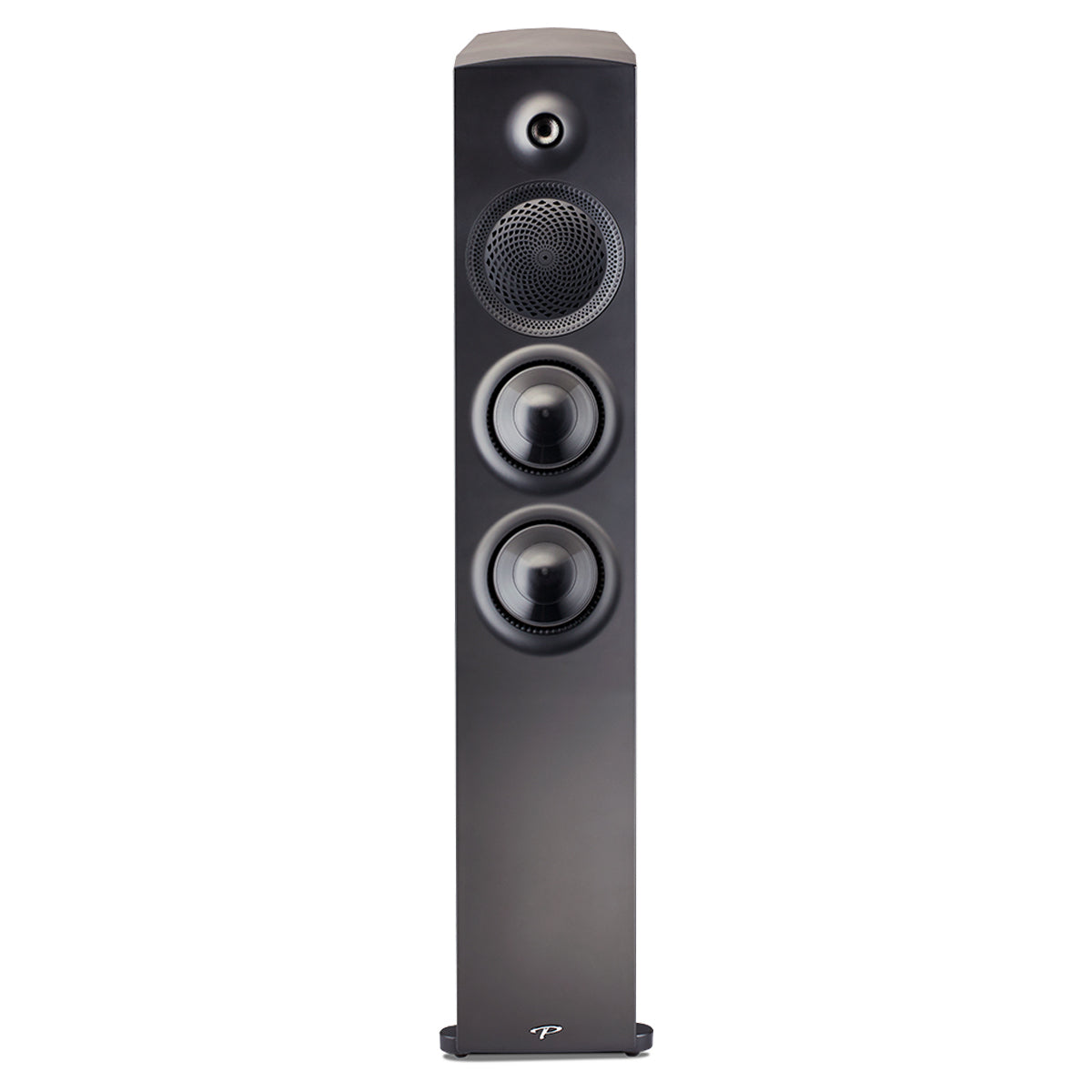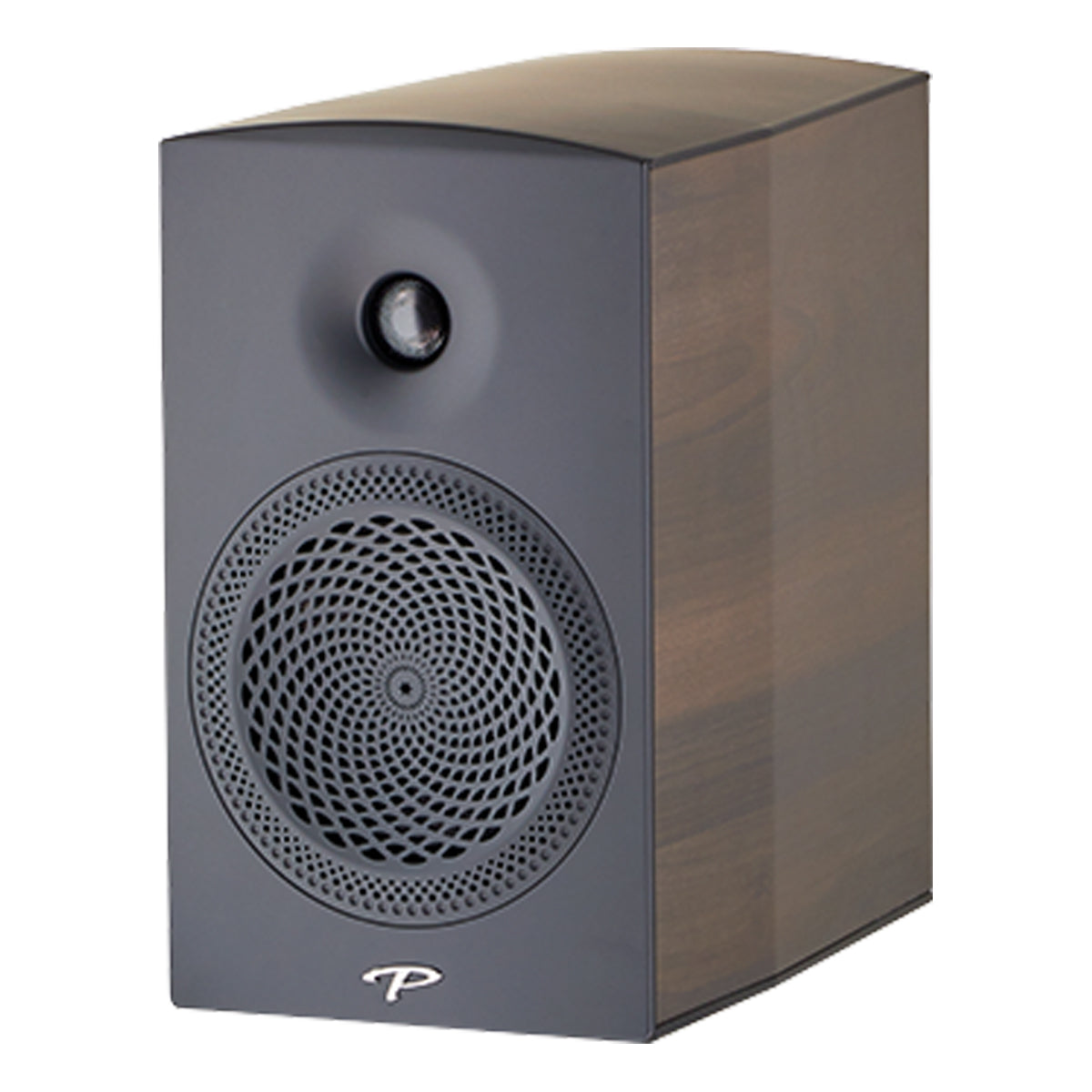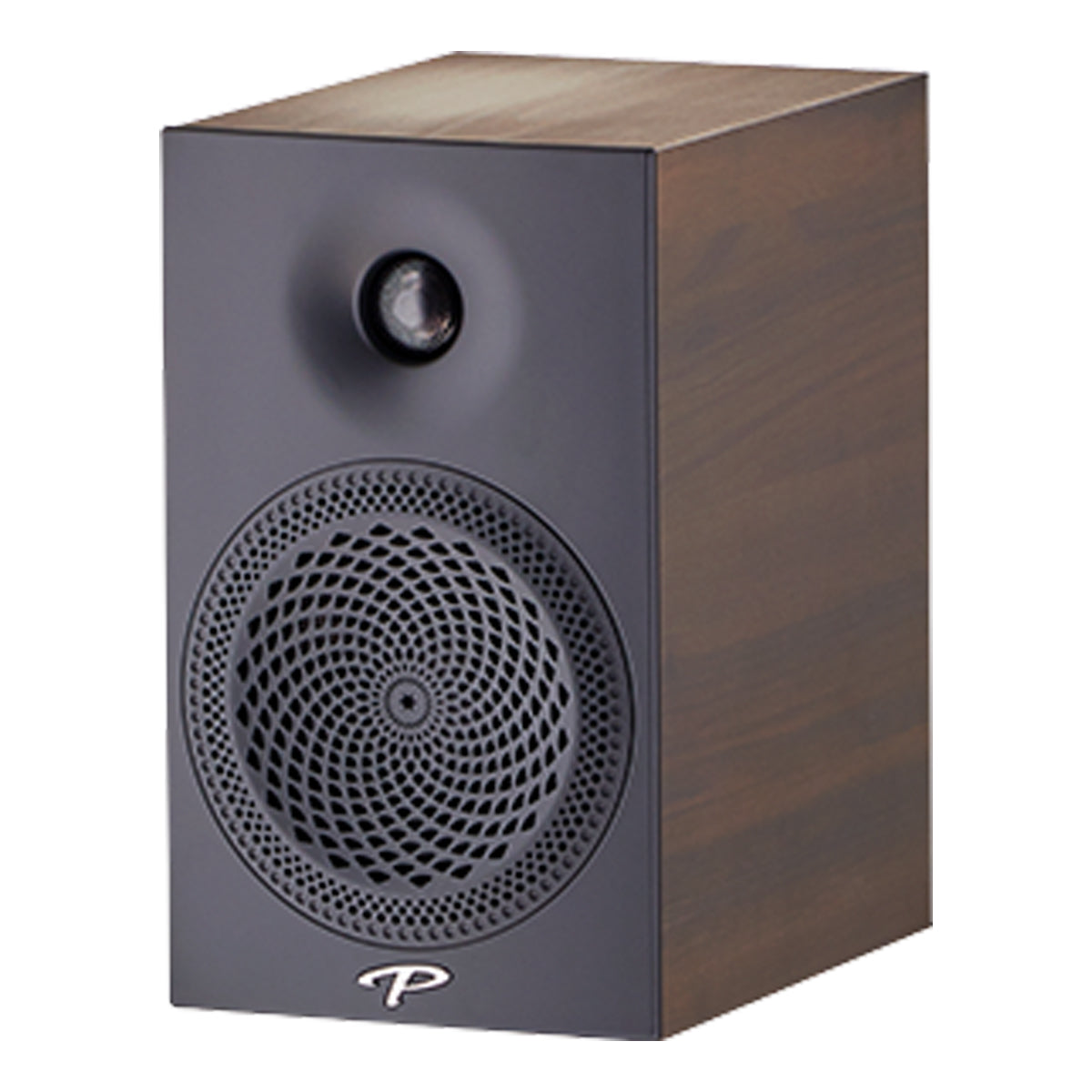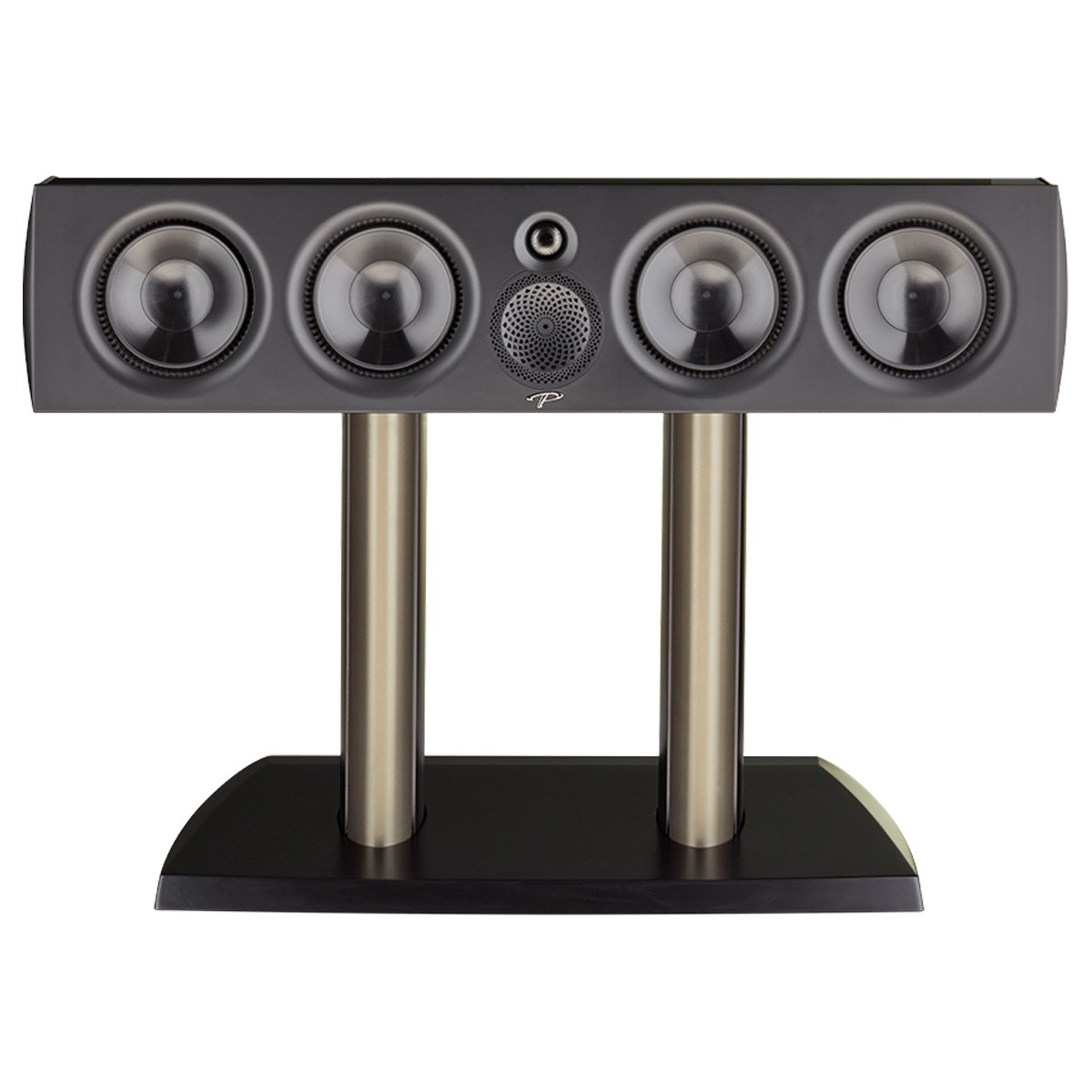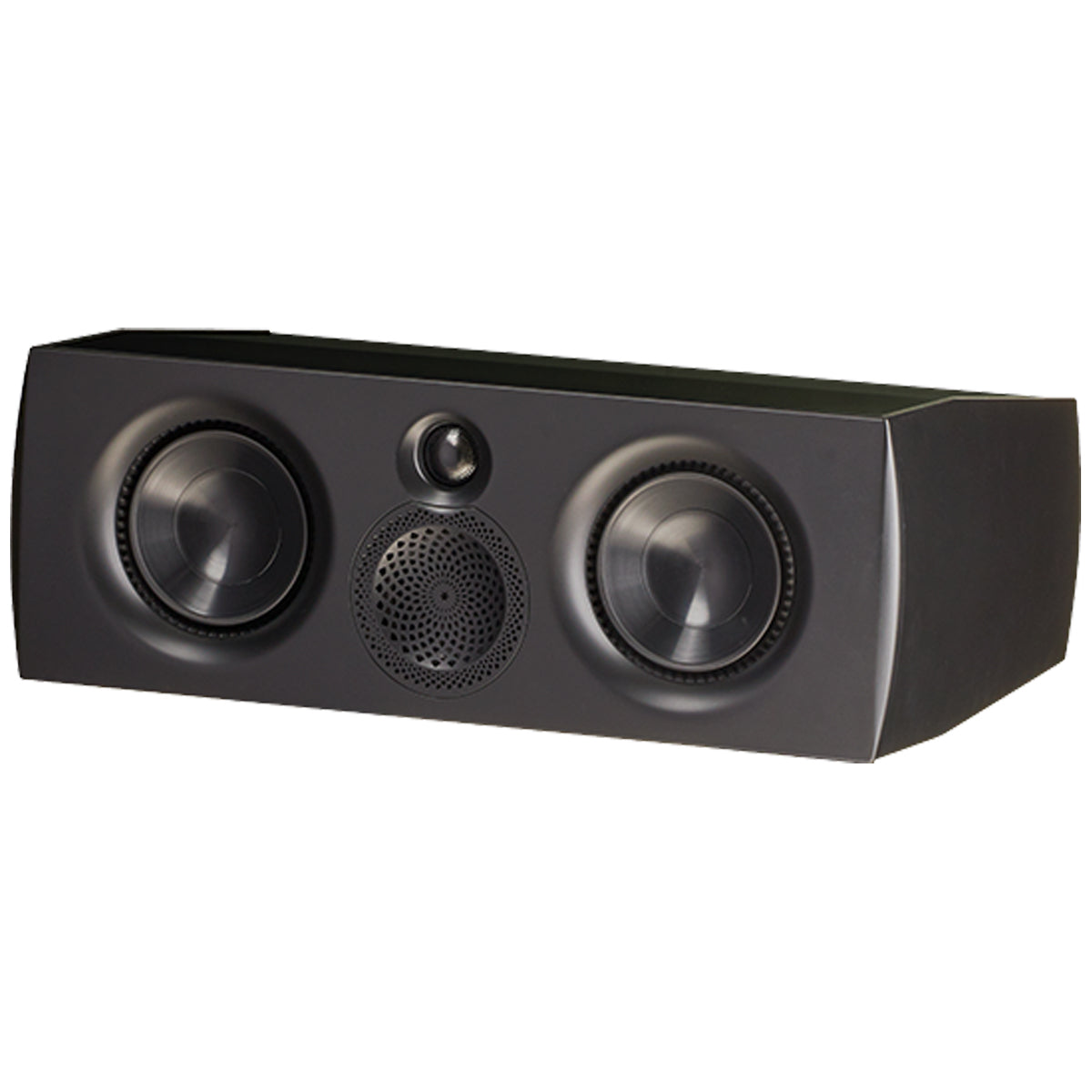Paradigm Premier Series Speaker Review




Little did Jerry VanderMarel and Scott Bagby realize back in 1982 when they had an idea for a different type of speaker company that Paradigm would grow to be one of the largest speaker manufacturers in the world. One of their keys was leveraging a relationship with Canada’s NRC or National Research Council. They were able to use testing equipment that would normally not be available to a start-up speaker company.
Today, Scott is still at the helm of Paradigm and they continue to use scientific testing to pursue affordable solutions for music and home theater enthusiasts. What is pretty unique about Paradigm is they manufacture a high percentage of all their speakers at their 225,000 square foot Canadian facility.
Many speaker companies today will design products in their local labs then farm out production to a plant overseas to save costs. While this method sometimes does have a cost advantage, it makes it more difficult to quickly try out new production ideas and concepts.
At Paradigm’s plant in Canada, their engineers love the fact that they are encouraged to try out new ideas. Paradigm has invested in rapid prototype machines that allow a new design to be tested in just a couple of days. When you talk about the technology for testing that is available to these engineers, it's now almost identical to what the NRC offers. Paradigm even has the largest anechoic chamber you’ll find anywhere in North America.

At Audio Advice, we’ve had a great relationship with the teams at Paradigm and Anthem for years. Anthem is their sister electronics company and makes our favorite brand of home theater receivers. We’ve always felt the Paradigm products offered an outstanding value when you compare them to others and have a super high level of craftsmanship.
Today’s review is on the Premier line up of speakers from Paradigm. This is their least expensive line up that is designed and manufactured entirely at the Canadian facility. When you look at the prices of some of these, you wonder, how is that even possible? It is pretty impressive to us as well. Not only do you get great value, but the Premier series also shares some of the same technology you’ll find in Paradigm’s top of the line Persona models.
The Premier collection has two tower speakers, two center channel speakers, and two bookshelf speakers. Even though the most expensive model is just under $2,000, when you look at them, you’d think they might be $3-$5,000 from some other speaker companies. Paradigm set out to design a series for people looking to make that next step up into high performance, but who also wanted to keep the price in a reasonable range.
While there are no matching subwoofers in the Premier series, you’ve got some great choices in the Defiance series that will mate up very well with any of the Premier models. Our only real complaint is the lack of a speaker system with Atmos elevation speakers built into the top.
A few other brands offer this and we think it's a great idea for people not able to get wiring into their ceiling. To put together a full Dolby Atmos system you would need to use Paradigms architectural in-ceiling speakers which will require mounting their Atmos speakers in your ceiling. We would not be surprised to see some elevation speakers from them soon.
Not only does the Premier Series sound great, but they also have some nice finish options. You can choose between gloss black, gloss white, and an espresso grain finish.
We will go over some of the tech the models share, then get into each model individually.

When you talk to the engineers who are designing speakers at Paradigm, they will all tell you they love the way they can see concepts go from their computer, to prototype, to the production line all right in front of their eyes in Paradigm’s 225,000 sq foot facility. When Paradigm developed their no holds barred Persona Series, they introduced some pretty interesting new speaker technologies. Some of this great tech has trickled down into the Premier Series which is pretty darn cool.
One part of a speaker that has vexed speaker designers for decades is how to keep a speaker driver's cone stiff, yet still allow the signal to push and pull it with no distortion. The problem occurs because you need a stiff material for the cone and a very flexible material for what is called the speaker surround. The issue is how to join these two very different materials to minimize distortion.
Paradigm developed a new material they call their Active Ridge Technology (ART) surround. What they do is overmold this injection-molded thermoplastic elastomer directly to their driver cones. When you see an ART surround in person, it will strike you with a totally different appearance than you normally expect to see in a speaker.
Every Premier speaker uses their ART tech, which actually reduces distortion by a whopping 50% over a typical surround and even allows the cone to have 3db more output. .When you couple the ART surround with Paradigms already great carbon infused polypropylene cone, you have some pretty special drivers!

When we saw our first PPA lens on a Persona prototype at CES a few years ago, we thought, why in the world are they putting a funky perforated cover over a speaker driver? It turned out when the engineers at Paradigm had been working on a way to improve detail without coloring the sound.
They discovered, through a huge amount of testing, that the right type of lens in front of a driver could block the interaction of out-of-phase frequencies which smoothed the output and allowed you to hear more super fine details. They call it their Perforated Phase Aligning (PPA) Lens. One side benefit too, is if you have small children, it prevents that dreaded pushed in tweeter or midrange!
Every speaker in the Premier line uses the PPA tech for speaker drivers covering the upper end and middle frequencies.

The tapered cabinets used for the Premier Series look great, but also serve an acoustic purpose. The non parallel walls of the tapered cabinets greatly reduce internal standing waves inside the cabinet. Paradigm uses ¾” MDF for the sides and back of the cabinets, but makes the front baffles out of 1” MDF which helps to reduce resonance even further. The 100B is the only model that does not use this type of cabinet structure.
When you look at these beautiful cabinets, you’ll also notice the front is only about as wide as the biggest speaker driver. This slim design helps reduce diffraction, which results in better three dimensional imaging. The build quality you get for this price range is quite impressive.
While there is no brand new tech in the crossovers, Paradigm is famous for using only the highest quality components in their crossovers. For those of you new to audio, the crossover is inside a speaker and directs the high frequencies to the tweeter while filtering them out from the other drivers, and does the same thing for the bass drivers and midrange drivers if present.
What is neat about Paradigm is they actually custom tune each crossover for a speaker model. They design on paper what they think will work best, then perform blind listening tests to decide on the final parts.
This slim, 4-driver, 3-way bass reflex, floorstanding speaker is the top of the line model in the Premier Series. You may want a little help around to get these into their final position as they weigh in at 53 pounds. With the front of the cabinet being only about 9” wide, these have a cool slim look, especially in the gloss white or espresso finish.
The dual 6 ½” bass drivers of the 800F give you super-fast bass. Paradigm made the choice to go for speed and accuracy overreaching down to the lowest depths here as the frequency response has a 3 dB down point of 43 Hz. These have a speed and quickness to the bass that is quite remarkable for this price range, but if you want to feel that battleship roar in a movie like Midway, you’ll want to add a Defiance subwoofer.
We like their decision here as it makes these sound especially accurate on music and what good home theater does not have a sub anyway! Their fairly high sensitivity of 92 dB means they are also extremely dynamic bringing you closer to that sound of live music.
The 700F is very similar to the 800F with just a reduction in the driver size for the midrange and bass drivers. It's also a 4 driver, 3 way design with 5 ¼” midrange and bass drivers instead of the 6 ½” drivers in the 800F. The sound is very similar to the 800F and in some ways we think the smaller drivers used are even faster. With an even slimmer cabinet than the 800F, they also present a spectacular soundstage. Like the 800F, they also have a pretty high sensitivity of 91 dB.
We think pairing these with a great Defiance sub like the X12, makes for an awesome combination.
The 200B is the larger of the two bookshelf speakers in the Premier line up and it is a pretty large bookshelf model standing at almost 14” tall. The 200B uses the same tweeter as all the other models coupled with the same 6 ½” bass driver used in the 800F. These guys reach down really deep in the bass for a bookshelf speaker with their 3dB down point being 55 Hz, which is very low for a bookshelf speaker. Their sensitivity is also very good for a bookshelf at 90 dB.
These speakers are very dynamic and put out a really large sound stage for a bookshelf speaker.
The 100B is the only model without the tapered cabinet design, but it does have the exact same speaker driver tech as all the other models and the thick front baffle. While the 100B is still very sensitive at 90 dB, it only reaches down to 68 Hz. For full range music, these really need to be used with a subwoofer. If you couple them with the Defiance X10 though and set the crossover at about 80 hz, you will have a magical combination! These also make great side and rear speakers in a home theater configuration.
When you put together your dream list for a center channel speaker, it should be large enough to produce some level of deep bass, very sensitive so the dynamics of explosions along with the subtle emotional cues from performers could be easily heard, and built like a tank, but somewhat skinny to fit in the space most center channels need to be. The 600C checks off all these boxes. We think this speaker may be the very best center channel value on the market today and if you have the space for it, the one you should pair up with any combination you put together using the Premier series.
It’s got 2 of the 6 ½” bass drivers with 2 6 ½” passive radiators, a special 4” driver for the midrange and the same tweeter all the models have. It weighs in at 43 pounds and while it's almost three feet wide, it's under 8” in height. The 600C is the most sensitive model in the whole line at 94 dB, which is just fantastic for a center channel.
This center has the ability to let you hear nuances in voices, yet handle the full impact of special effects sent to the center channel track. We highly recommend the 600C!
The 500C is the smaller of the two center channels. If the 700C did not exist, we would say this is a no brainer as it is also a 3-way design and very sensitive at 92 dB. However, unless you can’t fit the 600C into your space, just get the 600C - it's well worth the difference. Many of you can not fit a 36” wide center channel into your room which makes the 20” width of the 500C ideal for a lot of home theater cabinets.
Don’t get us wrong, while we think the 600C may just be the very best value in a center channel, the 500C is another remarkable performer. You just get much more impact with the 600C, even compared to some center channels that cost 2-3 times its price.
We love the fact that all of these models have the exact same speaker driver types throughout, plus they have identical tweeters. This means in a home theater situation, you will have totally seamless transitions between channels with panning effects sounding like you are there in real life.
Paradigm has done an amazing job putting together a line up that stands on its own musically, yet when combined in a home theater system, gives you performance that will be hard to beat for the price. They have also put Canadian pride into the making of these with their beautiful cabinet options.
We challenge you to go out and compare the speaker driver technology, cabinet technology and just how much you get for the money in the Premier series to any speaker out there. To our ears and analytical side, these are super impressive!
You'll be among the first to know about product launches, exclusive online deals, and the hottest audio trends.


